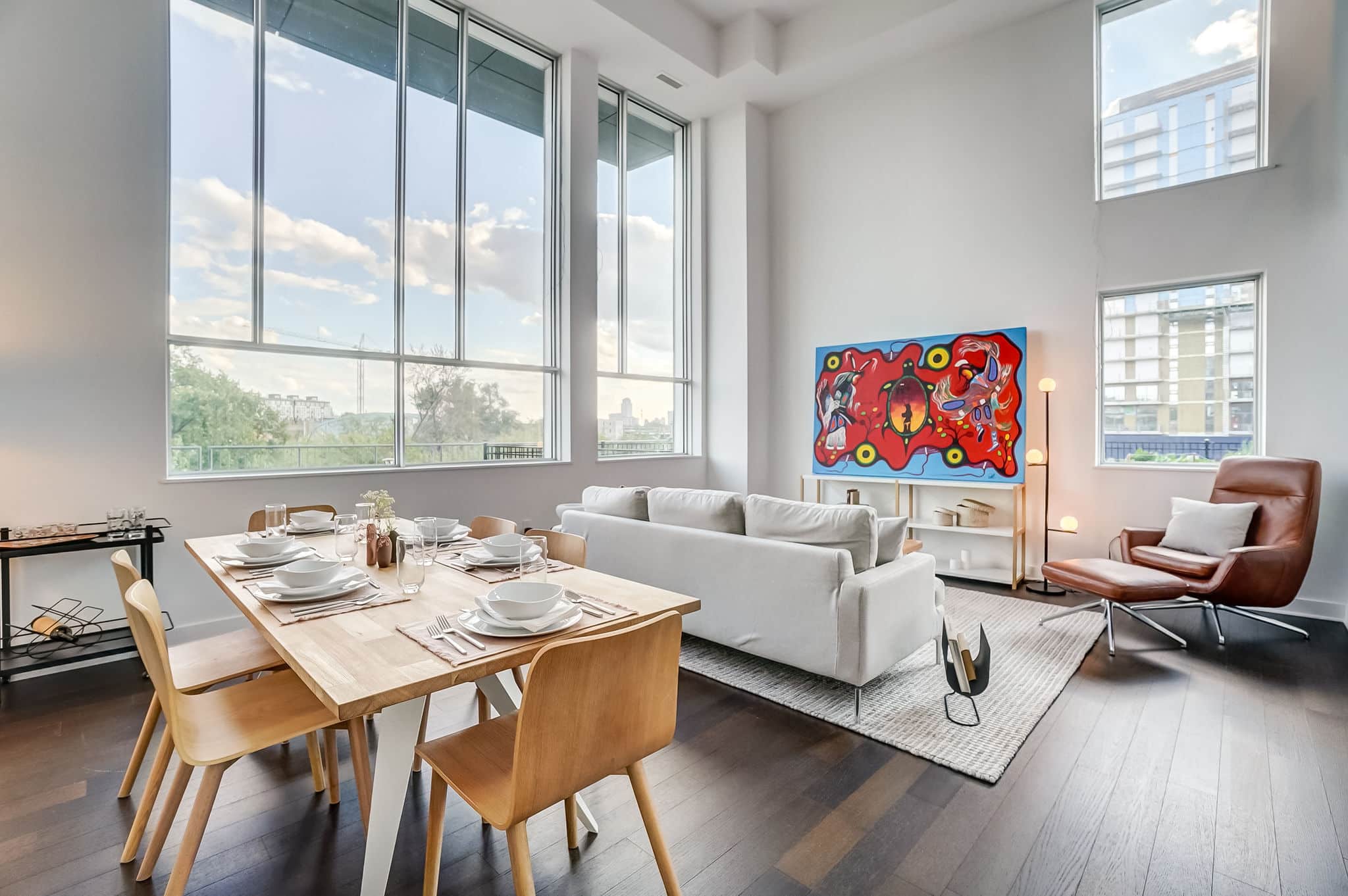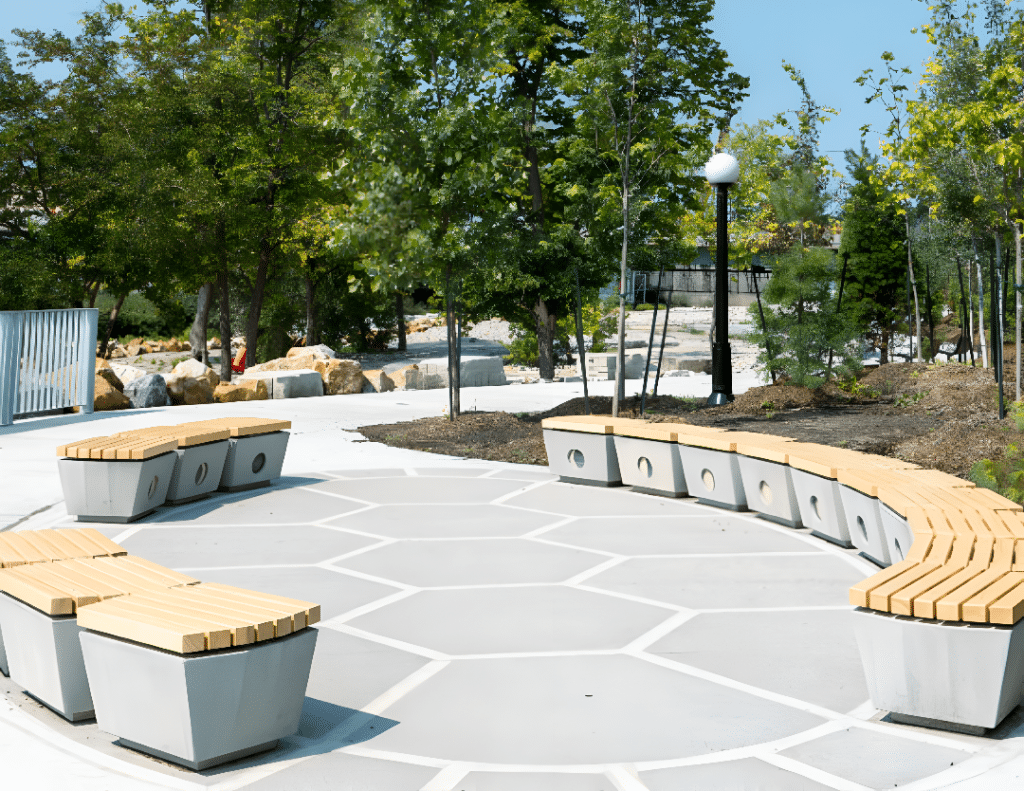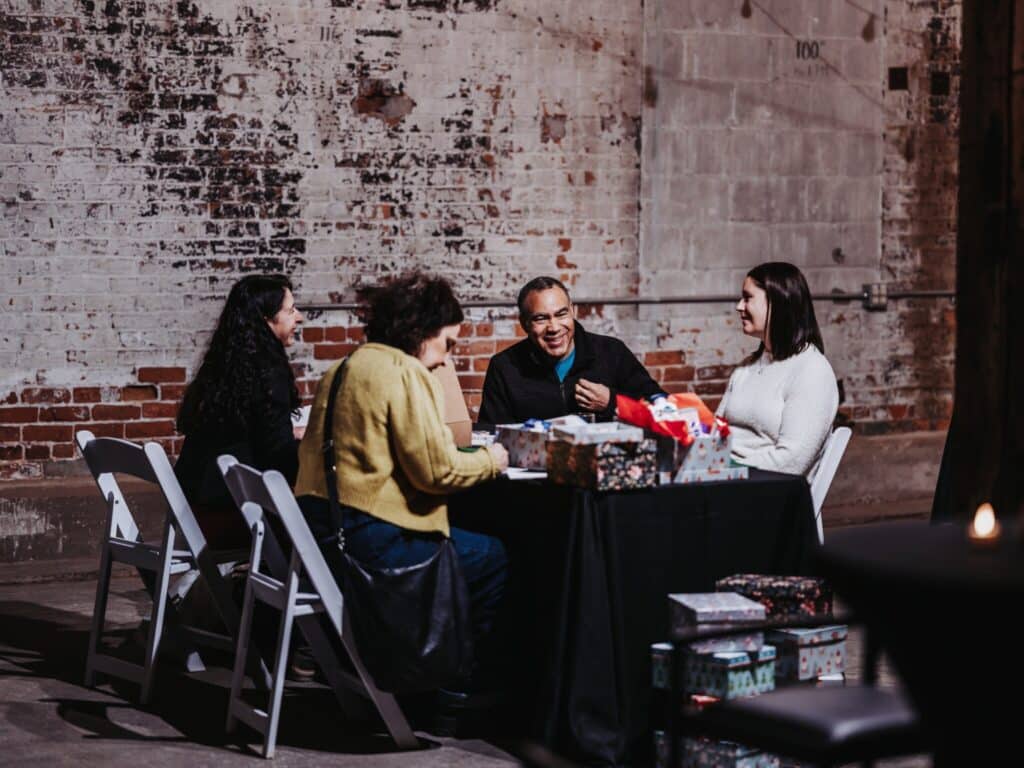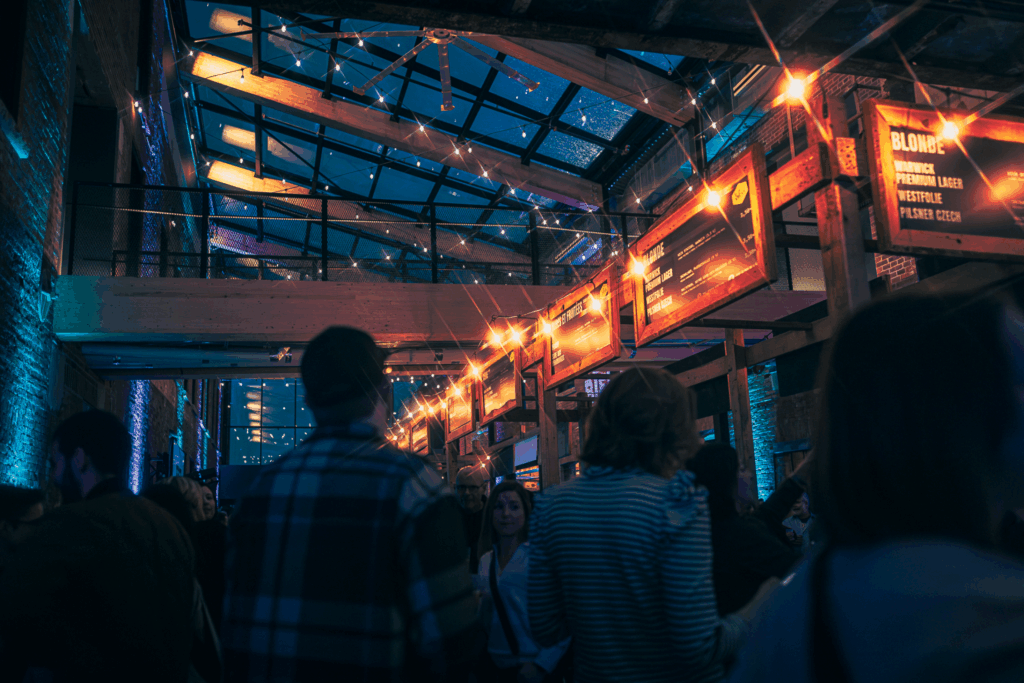Discover art at ZIBI
One of Zibi’s primary goals when it started to redevelop the waterfront lands was to use the site to showcase the Algonquin Anishinàbe language and Indigenous culture overall. In the spirit of reconciliation, and in collaboration with its Indigenous partners, the project was named Zibi, the Algonquin Anishinàbe word for river. Zibi also committed to creating trilingual signage throughout the site, and to giving Indigenous names to most of its streets, parks and plazas. It à also committed to showcasing Indigenous artworks throughout the site – inside and out.
Over the past decade or so, this area in the heart of the National Capital Region has begun to recognize and celebrate the fact it is located on the unceded Algonquin Anishinàbe territory with the opening of Pimisi Station, the soon to open Ādisōke, which celebrates Algonquin storytelling, the newly renamed Kichi Zibi Mikan parkway, and the recently opened William Commanda Bridge, to name just a few.
Zibi has also made a concerted effort to create a waterfront community that embraces and celebrates art in all its forms. To that end, it features Algonquin and non-Indigenous artworks and soundscapes throughout the community.
Featured public art
Here are some of the public art you can discover as you walk through the waterfront community:
Water Woman, 2022
Place Wàsa Zibi
Naomi Blondin’s Water Woman is an interpretation of the Sky Woman – a variation of Mother Earth, and a spiritual being who is believed to have lived among the stars. Sky Woman is one of her names and she is known for bringing the seeds of life onto Turtle Island (North America). Water Woman’s waves are made from glass mosaic, and the fish and sun rays from copper (painted) aluminum metal cut outs.
Naomi is Algonquin and French-Canadian and a member of Kitigan Zibi First Nation.
Makwa Bike Racks, 2021
Place Wàsa Zibi
The Makwa bike racks at Wàsa Zibi Plaza were designed by Algonquin artist Karl Chevrier from Long Point First Nation. Makwa is an adult bear in the Algonquin Language. Makòns is a cub.
The Makwa holds great significance in the Algonquin culture and are tasked with security and carrying medicine in the traditional government system.
We Are Seeds, 2021
Eddy Street
Inspired by Dinos Christianopoulos’s proverb “They tried to bury us, they didn’t know we were seeds.”, We are Seeds, the 60ft Canadian Heritage mural on Eddy Street is the newest public art addition to Zibi. This project was brought to live by Latin Canadian artist Claudia Gutierrez and her assistant Algonquin youth mentor Kiana Meness.
Where an Island Begins and Ends, 2023
Block 211 on Booth Street at Chaudière Island East
In Where an Island Begins and Ends, fragments of fragments become an archipelago of speculative potential. Bits of land, geology coming both apart and together, is the foundation of a kind of historical thinking, a geography of the future, emerging from colonial ruin. Pairing laser scans (LiDar) with material artefacts, and centuries of transforming forests into forest products with the raw veneer of cheap but nonetheless beautifully grained and knotted plywood, the intervention highlights the elemental forces that shape Chaudière, not only its industrial heritage of pulp and paper, but its shifting ecologies, cultures, and topography as well.
Noah George Scheinman is a multidisciplinary artist and designer whose interests span landscape, ecology, archives, infrastructure, and geologic time. His engagement with the Zibi site is the outcome of a long-term art and research project, Timber Limits, which investigates historic and ongoing interconnections between forests, the cultural trope of “wilderness,” and the spatial politics of the timber industry.
Music by Keith Whiteduck
Pangishimo Park
Visitors to Pangishimo Park will hear a selection of Keith Whiteduck’s music. An Algonquin musician from Kitigan Zibi Anishinabeg, Whiteduck’s style of music is described as a mix of contemporary, classic, and folk. The launch of his music in the park coincided with Summer Solstice on June 21st. His music can be heard at noon, 2pm, 4pm and 6pm until September 21st.
Featured works within Zibi’s residential and office spaces
Zibi’s residents, visitors and onsite workers can also find a number of Indigenous artworks within the residential and commercial spaces, such as:
Sound Room
Zibi House
Located in the publicly accessible Zibi House, the sound room showcases the cultural diversity of Canada’s Indigenous people with music selections from award-winning Indigenous musicians Jeremy Dutcher, Tanya Tagaq, Buffy Sainte-Marie, and Digging Roots.
Water Dancer, 2018
O Condo – Lobby
Frank Polson is an Algonquin Anishinàbe artist from Long Point First Nation. His works celebrate Indigenous culture, rooted in memories of traditional practices on the land in his childhood. Internationally renowned, Frank’s art is exposed across Canada and around the world. It is an honour to feature this original piece “Water Dancer” in the “O” building, dedicated to its residents.
Sister Water Spirit, 2018
Aalto Suites – Lobby
PJ Leroux is a fine art photographer from the Algonquins of Pikwakanagan First Nation near Golden Lake, Ontario. His photo entitled Sister Water Spirit shows her appearing on the saddest, most coldest nights, along the water where she waits for the cries of her stolen sisters whistling across the waters. Sister Water Spirit dances her powerful and brave warrior dance along the water’s edge, her dance lifts the souls of her free from the dark forces holding them hostage. Sister Water Spirit is the protector and guide of the Missing and Murdered Indigenous Women of Turtle Island.
Nalakwsis – Centre, 2019
Aalto Suites – Model Suite
Most of the artworks in this suite were made by a single artist and were curated as part of a site responsive art collection for Aalto Suites x Zibi. Nalakwsis (they/them) is an illustrator, beadwork artist, photographer, and writer from Whapmagoostui, QC. Nalakwsis’ work focuses on four distinct categories including racial issues, climate and the environment, 2SLGBTQIA+ and two-spirit awareness, and Indigenous creative practice. Nalakwsis is self-taught, and continues to be inspired by Eeyou culture, history, and legends, in Whapmagoostui.
Bimitigweyaa: The River Flows Along, 2021
Aalto – Coworking lounge
Emily Kewageshig is an emerging Anishinaabe artist who was raised in Saugeen First Nation #29, a small community located along the shores of Lake Huron. She graduated from Sheridan College with Honours in 2017, receiving the “Best in Show” award for her graduate exhibition, and is currently in her final year at OCAD University in the Indigenous Visual Culture program.




